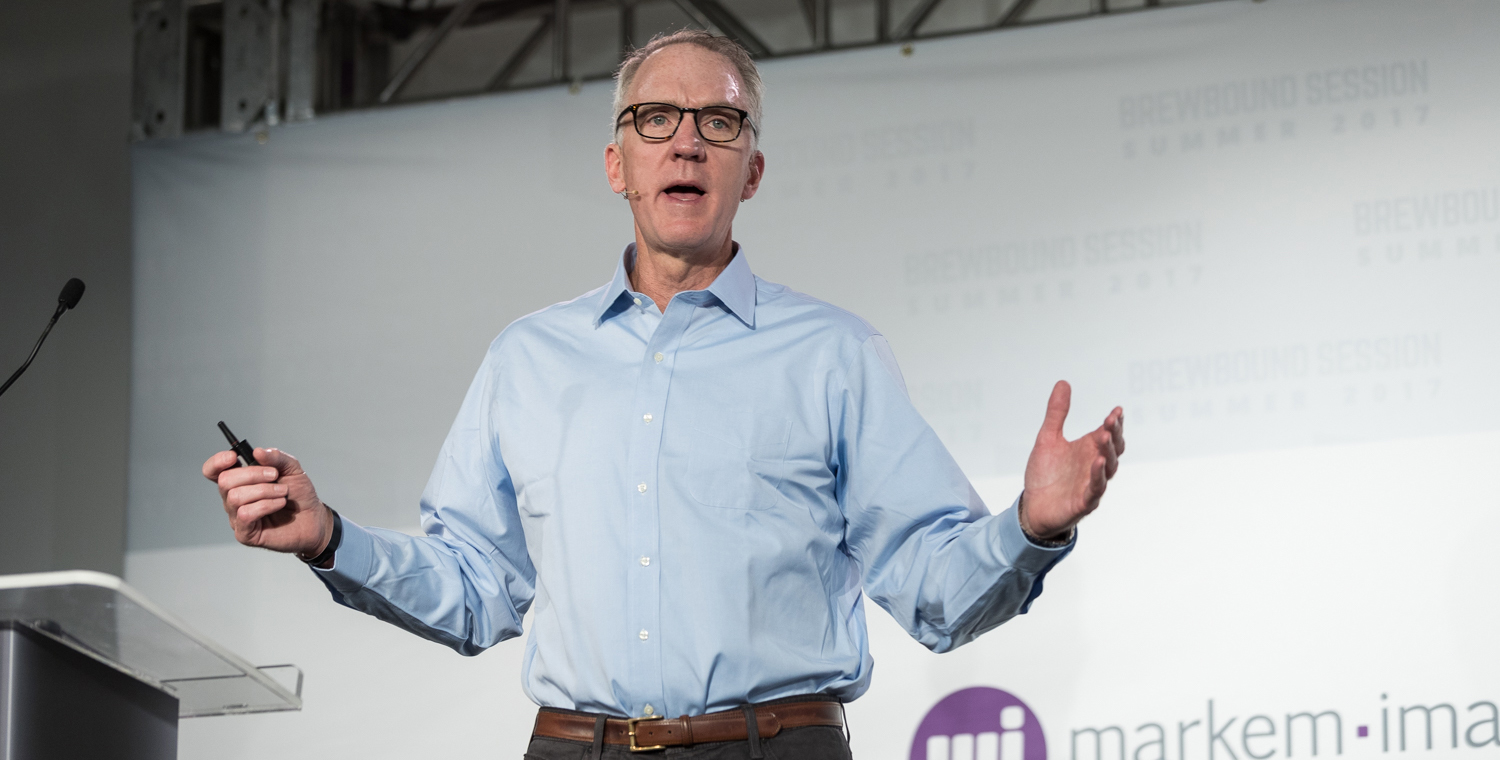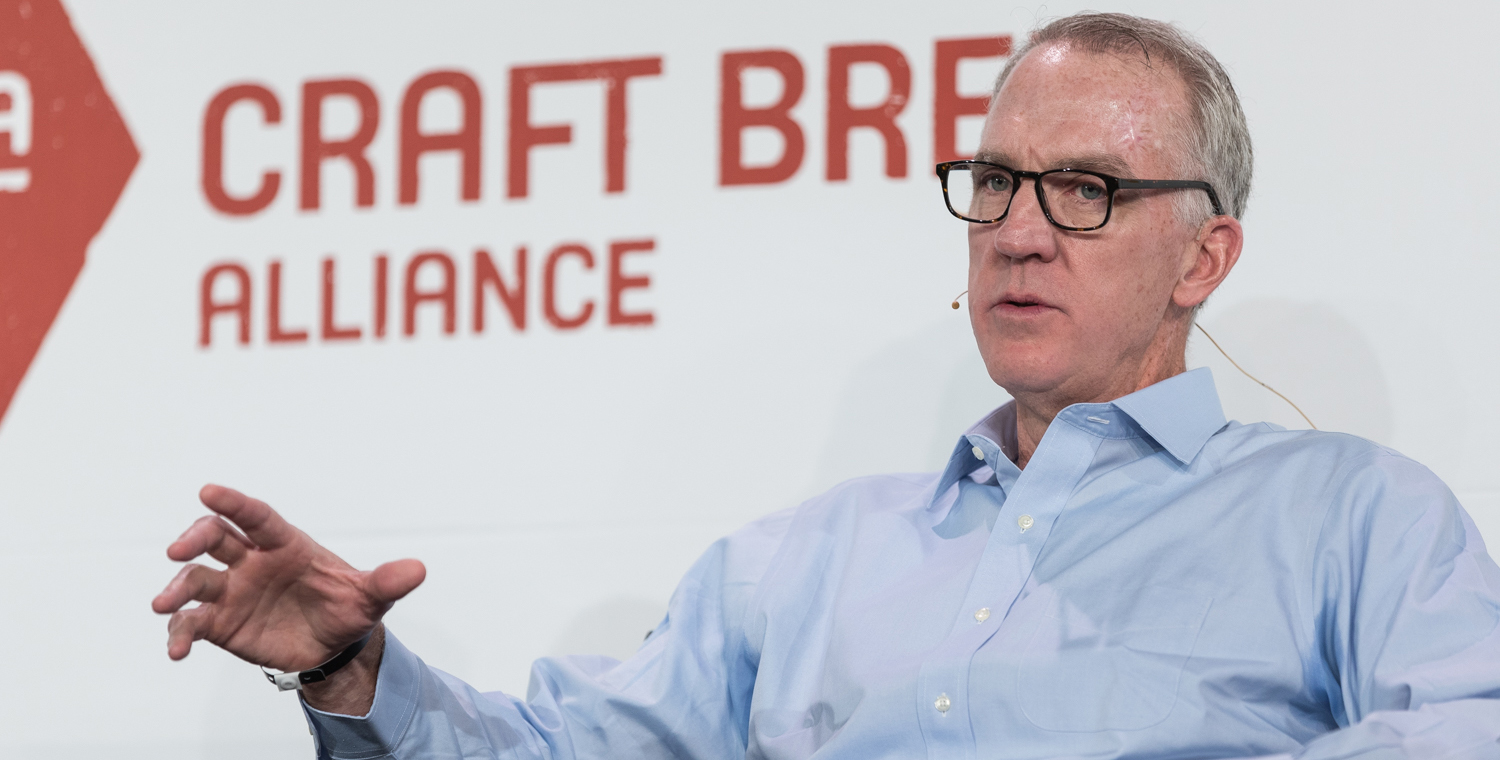
On a recent visit to Connecticut, Dan Kenary, the co-founder and CEO of Boston’s Harpoon Brewery, discovered that 60 percent of the unrefrigerated beers at one retail account did not have code dates.
“That’s shameful,” he exclaimed to roughly 200 beer industry professionals attending last week’s Brewbound Session business conference in New York City.
“We make a perishable product that has a shelf life much closer to milk than it does to wine or spirits,” he continued. “I challenge everyone – clear, legible, consumer-friendly code dates.”
Kenary is the latest industry stakeholder to emphasize the importance of maintaining quality standards as hundreds of new category entrants continue to flood an already crowded craft beer segment that has swelled to more than 5,400 companies.
The discussion really took off in 2014, when Brewers Association director Paul Gatza stood in front of thousands of brewers attending the annual Craft Brewers Conference and recounted a beer festival experience in which he sampled a variety of subpar offerings.
“Don’t fuck it up,” he yelled.
The following year, the BA, via its “quality subcommittee,” officially defined quality beer. Later in 2015, the organization introduced a “quality priority pyramid,” intended to serve as a “visual reference for craft brewers as they implement their unique quality programs.”
Then in 2016, the Beer Institute dove head first into the discussion with the introduction of a voluntary disclosure initiative that encouraged all brewers to provide freshness dating via “born on” or “best by” date codes.
And this year, the BA named two individuals – Neil Witte, a former quality specialist with Duvel USA, and Mary Pellettieri, an author and expert on quality brewing practices – to roles aimed at advancing the industry’s quality standards.

But for Kenary, the threat of un-coded beer languishing on the “scary, scary warm shelf,” as he called it, is just one of the challenges craft beer companies face in today’s competitive marketplace.
“If you had asked me what’s the biggest recent change, I would say it is the unprecedented pressure that we are getting from all different sides within the craft world,” he said.
That pressure is coming from three directions:
From above, Harpoon is challenged by companies like Anheuser-Busch, MillerCoors, Heineken and Constellation, all of which have bought into the craft segment in a big way, Kenary said.
“There has never been the kind of sustained pressure from above that we are seeing right now,” he said.
From the side, wine, spirits, cider, flavored malt beverages and cocktails are all taking drinking occasions away from beer.
And from below, thousands of new craft breweries have made it more difficult for established companies such as Harpoon to keep draft lines and shelf placements.
“The industry is changing and the world is changing,” he said. “It is a much more complex business.”

So what’s a regional brewer like Harpoon to do?
Kenary believes a “relentless focus on quality, transparency and the truth,” will ultimately enable craft brewers to combat those pressures.
“Times will change and it’s going to get tougher,” he said “We need to stay relevant to craft consumers and stay true to who we are.”
During his presentation, Kenary outlined some of the ways Harpoon has evolved within a rapidly changing industry.
Some of the projects he highlighted included the construction of a $3.5 million beer hall, the establishment of an employee ownership plan and investments into Barrel House Z (an upstart craft brewery in the Boston area) and Latitude Beverage Company (a wine company).
The company is pondering future investments, similar to the ones it has already made in Barrel House Z and Latitude Beverage, Kenary added.
“I think there are going to be tremendous opportunities over the next three or so years,” he said.
